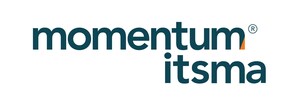LONDON and BOSTON, March 2, 2023 /PRNewswire/ -- Now in its 6th year, in partnership with the ABM Leadership Alliance, this qualitative and quantitative research is based on input from 279 ABM heads and practitioners from across the world.
ABM has gone from an unknown acronym to arguably one of the most successful marketing initiatives in history for B2B firms. This study tracks what's working, what isn't, and how ABM is evolving. The findings, captured in our report, Elevating ABM: Building Blocks for Long-Term Growth, show key trends in ABM, and reveal the top ABM priorities for success in 2023 and beyond.
#1 B2B marketing priority in 2022
The study found ABM continues to be a top B2B priority with substantial commitment and investment. B2B marketers continue to put ABM front and center of their marketing strategies, with ABM topping the priority list for the fourth year in a row, according to Momentum ITSMA research.
Growing investment and impact
The study found an increasing number of firms are switching more of their budget to ABM.
28% of the 2022 marketing budget is dedicated to ABM and 71% of companies will increase ABM spend in 2023, up 13.1% year on year.
Companies are investing in ABM because it works; most programs are driving substantial business impact.
The value of ABM moves far beyond lead generation. Most programs are seeing measurable improvements across a range of account, sales, and organizational objectives.
- 84% pipeline growth and 77% revenue growth
- 72% say ABM delivers higher ROI than other types of marketing
- 66% say ABM is significantly improving marketing and sales alignment
Cross-organizational alignment continues to be a top issue
Some firms are seeing mixed results, and the study provides clear indicators as to why.
Despite the progress and impact of most ABM programs, the most common challenges remain broadly organizational, as they have for many years: measurement, customization and personalization at scale, the relationship with sales, and resources.
The technology side of ABM also remains in early development for most programs. Few companies have built out a complete tech stack for ABM. The majority rely on core marketing systems and even those are sub-optimal for ABM impact. Investment plans for 2023 highlight a combination of core and special purpose tools.
ABM program leaders are focused on expansion, efficiency, and people
The study identifies 'ABM leaders' made up of a group of the highest performing programs that are delivering far greater business impact, when compared with other programs.
ABM leaders stand apart in three key areas:
- Driving insight and relevance: leveraging insight for performance and tailoring messaging for greater relevance
- Developing the extended team: investing in team development and aligning their extended ecosystem
- Integrating account-based strategy: elevating their programs as corporate growth priority and are actively prioritizing account opportunities
Where do you fall on the ABM adoption scale?
Momentum ITSMA has identified the four stages of ABM Adoption: Exploring, Experimenting, Expanding, and Embedding. As ABM continues to take hold across B2B, the community expands but maintains a predominance of programs in early stages of development. Only 17% of programs today are fully embedded as a foundational pillar of Go-to-Market strategy. That leaves the greater majority still working on their ABM strategy or refining their approach.
You can view the full report on www.MomentumITSMA.com or get in touch with us to help you with your ABM goals.
To learn more about our study, get in touch with Alex Koenig - Alexandra.koenig@momentumitsma.com - +44 203 858 0808
Logo: https://mma.prnewswire.com/media/1883923/ITSMA_Logo.jpg






Share this article